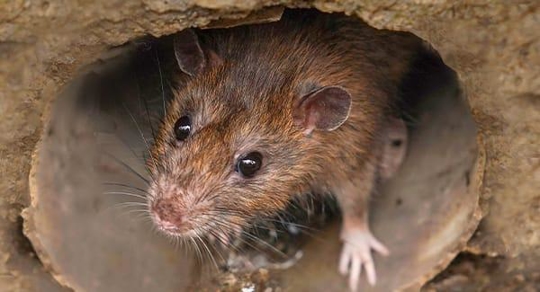One of the most formidable pests in Southern Maine is the Norway rat. It is a robust rodent that can live in the ground in your yard or in secluded areas within your home. It can make it through the cold Maine winters. And it can cause many problems. Here are some important facts you should know about these common rats.
Identification
The Norway rat is usually brown with a grayish-white underside and is between 7 to 9 inches long with a tail that adds another 6 to 8 inches to its length. Like all rats, its snout is rounder than the pointed snout of a mouse and its ears are smaller than the ears of a mouse.
Diet
Norway rats are opportunistic feeders. They aren't picky. They'll get a meal in your nice, clean pantry or from your less-than-nice, dirty trash. They'll eat a rotting piece of fruit as readily as they'll eat a fresh piece of fruit. They'll eat vegetables in your garden, and eggs, dog food, meat, and fish if they can find them.
Habitat
While a Norway rat prefers to live in the ground outside your home, it can get inside and stay inside permanently, especially in Maine where we have very cold winters. In your home, they can be found in many places.
- Wall voids.
- The voids above drop-down ceilings.
- Basement storage areas.
- Attic spaces.
Entry Points
There are many ways rats can get into your home and many entry points they'll use, such as gaps around pipes and wire conduit, cracks in foundation walls, gaps created in sole plates by water-damaged wood, and vents. But a rat doesn't need an entry point to get in. It can make its own entry point. Some of the ways a Norway rat may get in are:
- Chewing on wood that has been rotted by water damage. When ice and snow melt, they can create saturation near your home and lead to conditions that can decay the wood of your home. If a Norway rat can find a location that is hidden or protected, it will nibble on softened wood in that location. A spot under your stairs or under your deck will be a likely target.
- Chewing on weatherstripping. You have a rubber seal around your exterior doors that keeps the cold winter air out and the warm air in. If a Norway rat senses warm air leaking out, it will nibble on this rubber material to make an entry point. It only takes a hole the size of a quarter to allow a rat in. They're able to compress their internal organs to get through holes that are much smaller than their bodies.
- Chewing the frames around windows and doors. If a rat can get into the voids of your window and door frames it has no trouble getting into your wall voids from there. Your frame voids give them the protection they need to chew for long periods without feeling nervous about predators.
Populations
Norway rats can live in large populations in close proximity to each other. If you find signs of these rodents in your yard, such as droppings, chew holes, ground holes, or the smell of urine, you're not dealing with just one rodent.
Water Rats
Norway rats have many names. Three common names are sewer rats, water rats, and wharf rats. This is because Norway rats love water. They can tread water for three days and hold their breath for three minutes. According to Nation Geographic, they can also swim up pipes from sewer culverts and gain access to a home by way of a toilet.
What to Do About Norway Rats
If you find evidence of Norway rats, reach out to Big Blue Bug Solutions. We use the most trusted methods and products for rodent control and elimination. We can help you protect your health and property from these invading pests.

